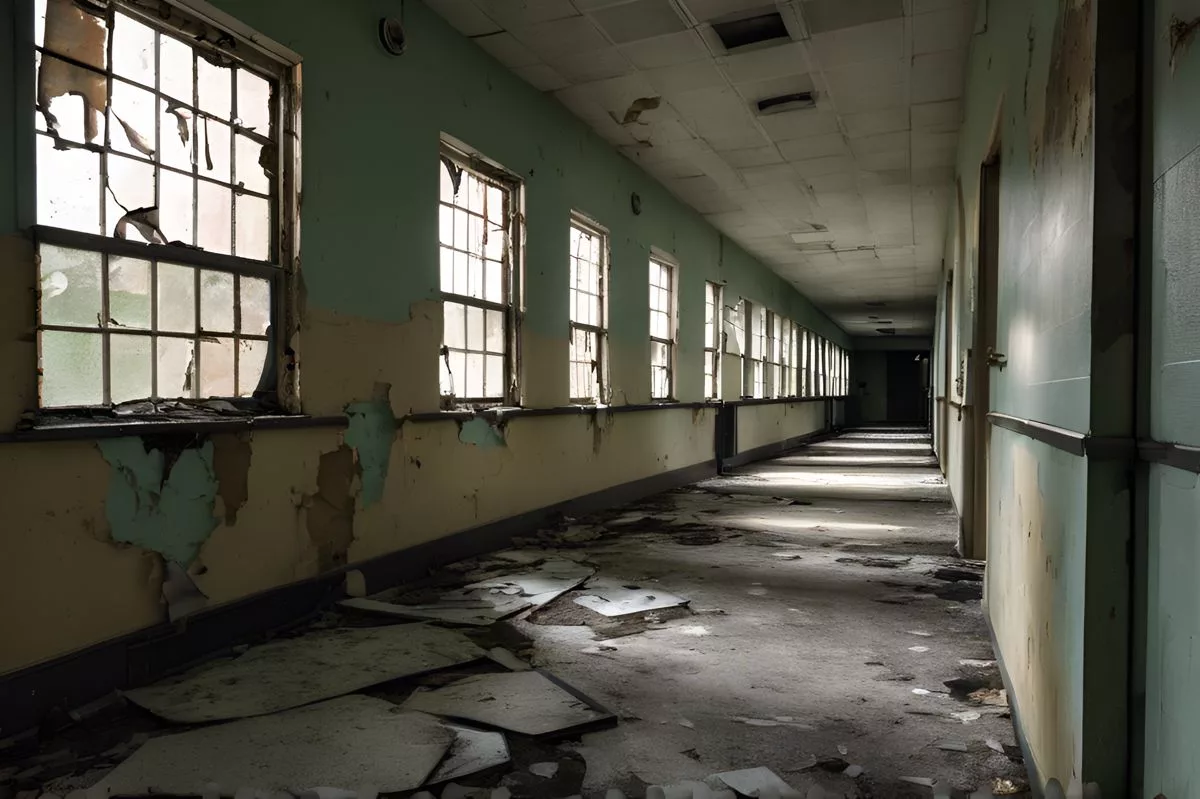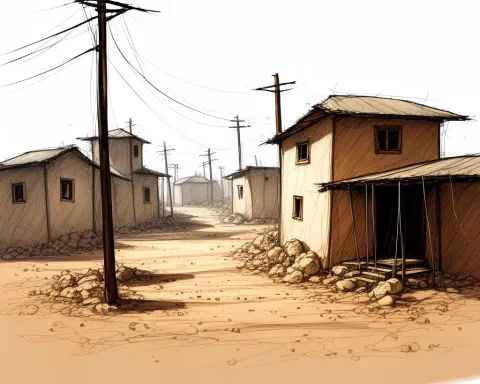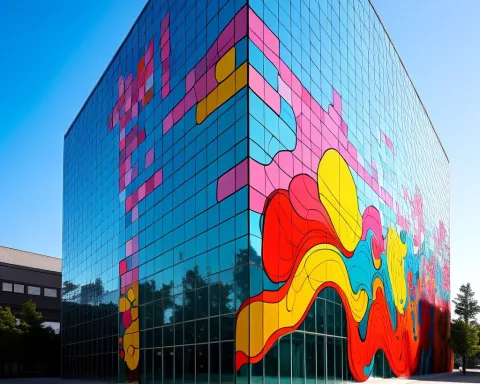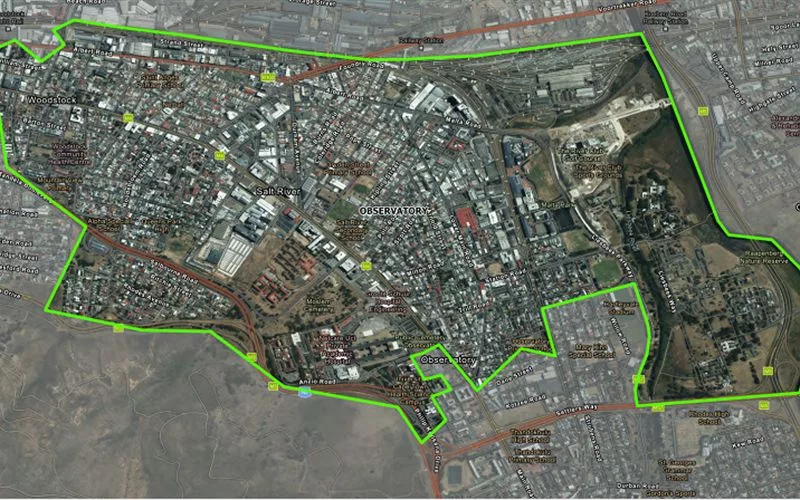Kempton Park Hospital, once a bustling hub of healthcare in Gauteng, now sits in eerie silence after being abandoned for nearly 30 years. What was once filled with life has turned into a ghostly reminder of what could have been, with its crumbling walls attracting curious explorers and vandals alike. Recently, the Gauteng Department of Health is looking for private partners to breathe new life into this forgotten space, hoping to transform it into a valuable community resource again. If successful, this revival could ease the strain on nearby hospitals and spark a wave of renewal in the area. The hospital’s journey from decay to revitalization embodies the spirit of hope and the potential for change in urban spaces.
What is the fate of Kempton Park Hospital?
Kempton Park Hospital, once a vital healthcare facility in Gauteng, has remained abandoned for nearly 30 years. The Gauteng Department of Health is considering a public-private partnership to revitalize it, aiming to address regional healthcare needs and transform it into a sustainable community asset.
The Silent Echoes of Kempton Park Hospital
Kempton Park Hospital, once a pillar of healthcare excellence in Gauteng, now lies dormant, shrouded in a haunting quiet. For nearly three decades, this once-vibrant institution has stood abandoned, a stark reminder of bureaucratic inefficiency and economic mismanagement. The sprawling complex, now a ghostly remnant of its former self, has drained government coffers through exorbitant maintenance and security costs. Recently, the Gauteng Department of Health (GDH) has signaled a potential revival by considering a public-private partnership to rejuvenate the dilapidated facility.
From Ambition to Abandonment
Opened with grand aspirations, Kempton Park Hospital was envisioned as a cornerstone of healthcare in the region. The facility boasted 350 beds and cutting-edge equipment worth R10 million, positioning it as a leader in modern medical care. However, the hospital’s promising trajectory was abruptly derailed.
On December 26, 1996, then Health MEC Amos Masondo ordered the hospital’s closure, citing underutilization and financial impracticality as primary reasons. This decision reverberated through the healthcare system, shifting a significant patient load to neighboring institutions, particularly the Tembisa Tertiary Hospital. The immediate aftermath saw Tembisa overwhelmed with increased patient numbers, straining its resources and capacity.
The Economic and Social Repercussions
The financial burden of maintaining an inactive hospital has been staggering. Reports from Polity and Maroela Media estimate that security alone costs over R6 million annually. Despite these expenditures, the hospital has become a magnet for vandals, urban explorers, and ghost hunters. Its deteriorating hallways and eerie atmosphere have spawned local legends, turning it into a site of both intrigue and trepidation.
MEC Nomantu Nkomo-Ralehoko recently announced to the Gauteng Provincial Legislature a new direction for the hospital. Instead of costly demolition or complete refurbishment, the government is now seeking private partners for a potential revival. This strategic shift aims to transition from stagnation towards renewal, leveraging private sector involvement.
Exploring Public-Private Partnerships
Public-private partnerships (PPPs) present a viable solution to the conundrum of Kempton Park Hospital. Historically, such collaborations have successfully reinvigorated neglected spaces. For instance, London’s King’s Cross redevelopment transformed a blighted area into a bustling commercial and cultural hub. Similarly, New York’s High Line turned abandoned railway tracks into an urban oasis.
By inviting private entities to propose innovative solutions, the Gauteng government acknowledges its limitations while opening doors to new possibilities. Private sector participation could bring not only financial investment but also expertise in project management and sustainable development. This collaborative approach offers a pragmatic pathway to breathe new life into the hospital.
The Haunting Allure
Kempton Park Hospital’s current state evokes a mix of melancholy and fascination. Accounts of ghostly apparitions and unexplained phenomena have elevated its status among paranormal enthusiasts. This interest, though unconventional, underscores the hospital’s grip on public imagination. Urban explorers, equipped with flashlights and cameras, venture into its dark corridors, seeking both thrills and a connection to history.
These activities, albeit illegal, reflect a broader societal fascination with the abandoned and forgotten. They highlight a collective desire to uncover hidden stories and experience the eerie beauty of decay. The hospital’s juxtaposition of dereliction and potential revitalization offers a poignant commentary on urban neglect and human creativity.
Charting a New Path Forward
As the Gauteng Infrastructure Funding Agency (GIFA) evaluates the site and potential partners submit proposals, various scenarios surface. Reviving Kempton Park Hospital could significantly address regional healthcare demands, easing the burden on facilities like Tembisa. Alternatively, the site could be transformed into a mixed-use development, blending healthcare with commercial and residential spaces.
This vision aligns with global trends in urban development. Adaptive reuse—the practice of repurposing old buildings for new functions—has gained traction worldwide. It preserves architectural heritage while meeting modern needs. The hospital’s transformation could serve as a case study in sustainable urban renewal, balancing historical preservation with contemporary utility.
Broader Implications for Urban Renewal
The initiative to revive Kempton Park Hospital resonates beyond its immediate context, reflecting a growing recognition of the need for innovative solutions to urban decay. Across South Africa, numerous public facilities languish in disrepair due to financial constraints and administrative inertia. Exploring public-private partnerships could provide a blueprint for addressing similar challenges nationwide.
Moreover, the hospital’s revival could stimulate local economic growth. Construction projects create jobs, while a functional healthcare facility attracts related businesses and services. These ripple effects could spur broader development, enhancing the socio-economic fabric of the area.
Historical and Artistic Parallels
Kempton Park Hospital’s story mirrors artistic movements that find beauty in decay. The Romantic era, for instance, celebrated the sublime in ruins, viewing them as symbols of nature’s reclaiming power. Similarly, contemporary art often explores themes of abandonment and rebirth, transforming derelict spaces into canvases for creative expression.
In literature, the concept of the “urban sublime” captures the awe and introspection evoked by decaying cityscapes. The hospital, with its crumbling facade and ghostly echoes, embodies this aesthetic. Its potential transformation mirrors the human capacity for renewal, turning ruins into testaments of resilience.
Envisioning the Future
As Kempton Park Hospital stands on the brink of potential transformation, its fate encapsulates broader societal themes. The balance between neglect and renewal, decay and rebirth, speaks to collective aspirations and anxieties. Reviving the hospital could symbolize a triumph over bureaucratic inertia, reclaiming urban spaces for communal benefit.
The public-private partnership model offers a practical route forward, blending governmental oversight with private sector dynamism. If successful, Kempton Park Hospital could emerge not just as a healthcare facility but as a beacon of urban regeneration. Its journey from abandonment to revitalization could inspire similar efforts across South Africa, transforming forgotten spaces into thriving community assets.
Anecdotes and Observations
Walking through the abandoned halls of Kempton Park Hospital, one can’t help but feel the weight of its storied past. Peeling paint and shattered windows starkly contrast with the once-vibrant life within. Yet, amidst the decay, glimmers of potential emerge—a sunlit atrium, robust structures awaiting new purposes.
These observations highlight the hospital’s dual identity as both relic and prospect. Its narrative, rich with historical significance and future promise, serves as a poignant reminder of the cyclical nature of urban environments. As Gauteng explores new avenues, Kempton Park Hospital stands as a testament to human fallibility and the enduring hope for renewal.
FAQ
What is the history of Kempton Park Hospital?
Kempton Park Hospital was opened with the ambition of being a pillar of healthcare in Gauteng, boasting 350 beds and advanced medical equipment. However, it was closed on December 26, 1996, due to underutilization and financial impracticality. Since then, it has remained abandoned for nearly 30 years, becoming a site of neglect and decay.
Why has Kempton Park Hospital been abandoned for so long?
The hospital has been left dormant primarily due to bureaucratic inefficiency and economic mismanagement. After its closure, the financial burden of maintaining the vacant facility became significant, with annual security costs exceeding R6 million. As a result, the site has deteriorated, attracting vandals and urban explorers.
What plans are being proposed for the hospital’s future?
The Gauteng Department of Health is seeking private partners for a public-private partnership to revitalize Kempton Park Hospital. The aim is to transform it into a sustainable community resource that could alleviate healthcare pressures on nearby facilities like Tembisa Tertiary Hospital.
How could a public-private partnership benefit Kempton Park Hospital?
Public-private partnerships could provide financial investment, expertise in project management, and innovative solutions for the hospital’s revival. This collaborative approach has historically yielded successful revitalizations of neglected spaces, making it a promising pathway for the future of the hospital.
What are the potential impacts of reviving Kempton Park Hospital on the local community?
Reviving the hospital could significantly address regional healthcare needs, reduce the strain on neighboring institutions, and stimulate local economic growth. Construction jobs would be created, and a functional healthcare facility could attract related businesses, fostering broader development within the area.
How does the story of Kempton Park Hospital reflect broader themes in urban renewal?
The journey of Kempton Park Hospital embodies the tension between decay and renewal, highlighting the need for innovative solutions to urban decay. Its potential revitalization may serve as a case study in adaptive reuse, preserving historical architecture while meeting modern needs and inspiring similar initiatives across South Africa.












